Walking through Art in Life, CIMA Gallery’s annual lifestyle exhibition, is like taking a stroll through mini India, and the experience starts right from the entrance. From exquisite handwoven saris to stunning metal sculptures to designer blouses, the entrance display itself is like a sneak peek into what one can expect.
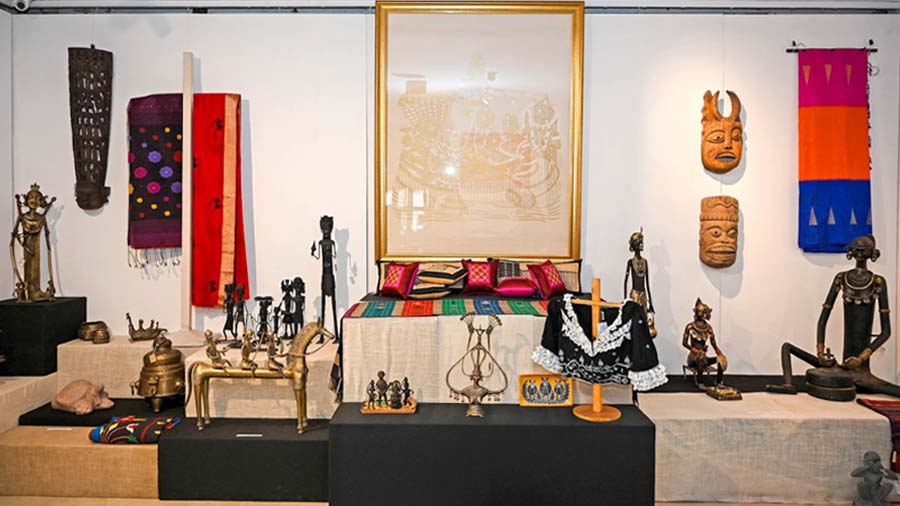
The entrance display at Art in Life Photos: Amit Datta and Ritagnik
“In this edition of Art in Life we have tried to emphasise on three states that have a large representation of tribal communities — Chhattisgarh, Odisha and Tamil Nadu. The presence of the indigenous communities in these states has a large impact on the art from these places, whether it is textiles or metals or fabric,” said Rakhi Sarkar, director of CIMA.

A ‘dokra’ sculpture from Odisha
A century-old metal sculpture from Chhattisgarh sits next to a traditional dokra sculpture from Odisha. A Sami quilt, woven by the snake charmer communities in Kutch region, hangs next to a pre-Independence kantha quilt from the erstwhile East Bengal. Handwoven Kanjeevarams from Tamil Nadu share space with muslin Jamdanis from Dhaka, Bangladesh.
“Art in Life started with a view to provide a platform for art from rural India and making them accessible to urban audiences. In the process of curating this exhibition over the last year, we have discovered the real India and really understood our country,” said Sarkar.
The lifestyle exhibition, which is on till October 1, also aims to keep alive weaving and crafting traditions that are becoming almost extinct because of lack of monetary and infrastructure support. This year, the exhibition is featuring a small collection of saris by National Award-winning master weaver B. Krishnamoorthy, who is considered ‘the god of Kanjeevarams’. The saris, priced around Rs 40,000 to Rs 45,000, are made of pure silk and real zari, which is made of silver dipped in gold.
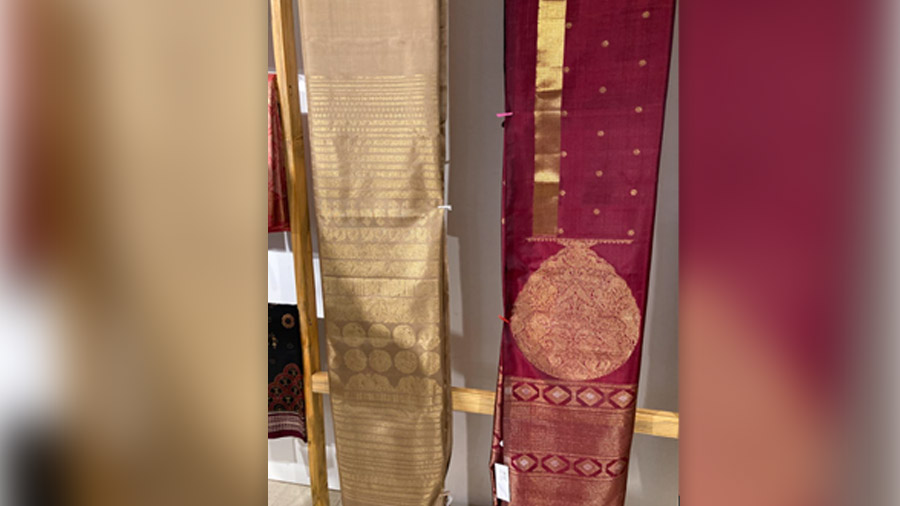
Kanjeevarams by B. Krishnamoorthy
“Any kind of master weaving and master printing will become almost extinct soon because it is becoming too expensive. These weavers and printers don’t get support from the government and even we as a community are not supporting them. We are not willing to pay the kind of remuneration a master weaver requires to deliver something that takes six months to weave. We want to bring these kinds of works to the urban audience,” said Sarkar.
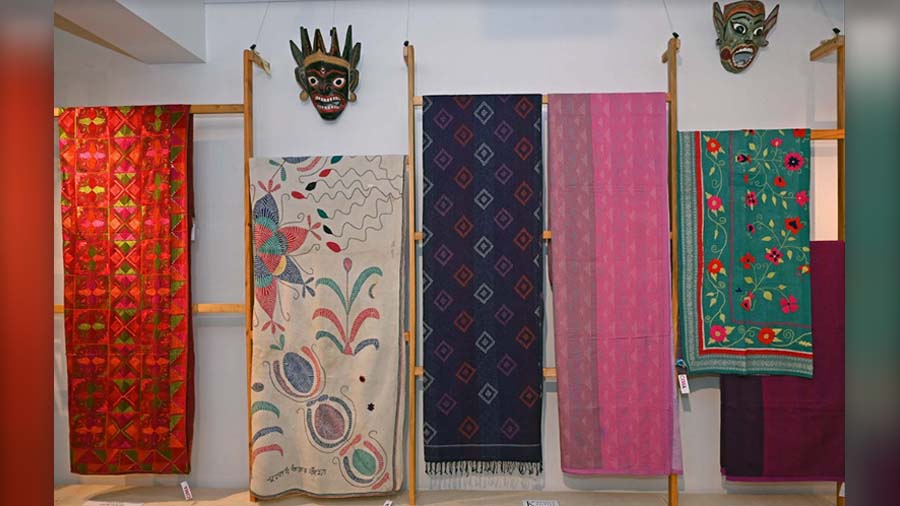
A pre-Independence kantha quilt (second from left) and kantha work from Murshidabad
For this edition, Art in Life is also showcasing a kantha collection from the Katna village of Murshidabad, woven by street survivors and presented by the organisation Swayan Shakti. The kantha work on the quilts is a typical islamic form of embroidery that has no figures but a lot of flora and is very measured.
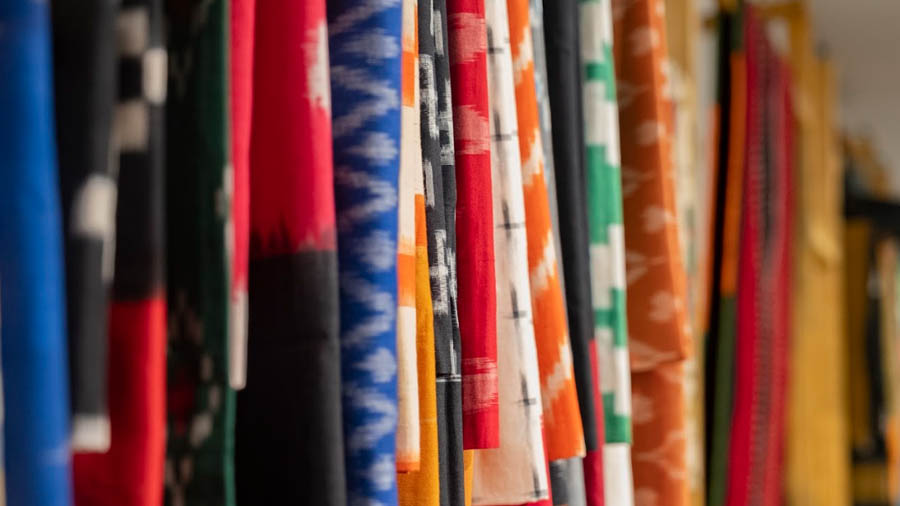
Collection of Ikkats
And then there are the saris from the rest of India — Banarasis from Varanasi, Bomkais and Dolaberis from Odisha, Ikkats and Telias from Andhra Pradesh, Chettinads and Kanjeevarams from Tamil Nadu, silks from Assam, Tants, Khadis from Bengal, and more. “Our sari collection, curated from across the country, is very representative of India,” said Sarkar.
Art in Life, like always, also focuses on hand-run screen and block printing, art that is quickly losing out to machine prints. In their dress material section, there are Ajrak prints from Gujarat and Sanganeri prints from Rajasthan. They also have zardosi work from Varanasi and khadi woven in Bengal.
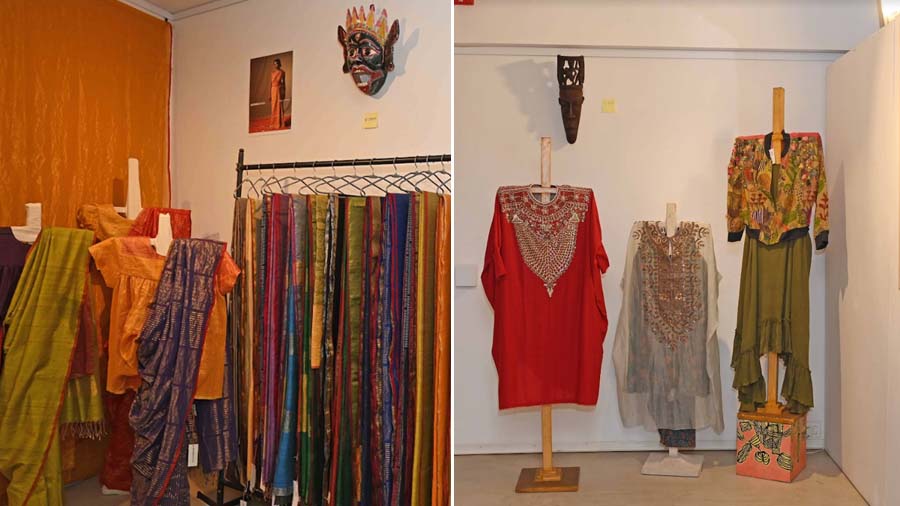
Collections of designers (left) Paromita Banerjee and (right) Divya Seth
Also in focus are four designers — Hanshu, Paromita Banerjee and Parama Ghosh from Calcutta, Sunita Shankar and Divya Seth from Delhi. What do they have in common? The use of organic, handmade fabrics. “We wanted to do something with contemporary intervention and all the designers we have featured all work with handmade, hand printed fabrics and genuine and authentic textiles. And we never compromise on that,” said Sarkar.
Art in Life is on till October 1 at CIMA Gallery everyday (including Sundays) from 11am to 8pm.

